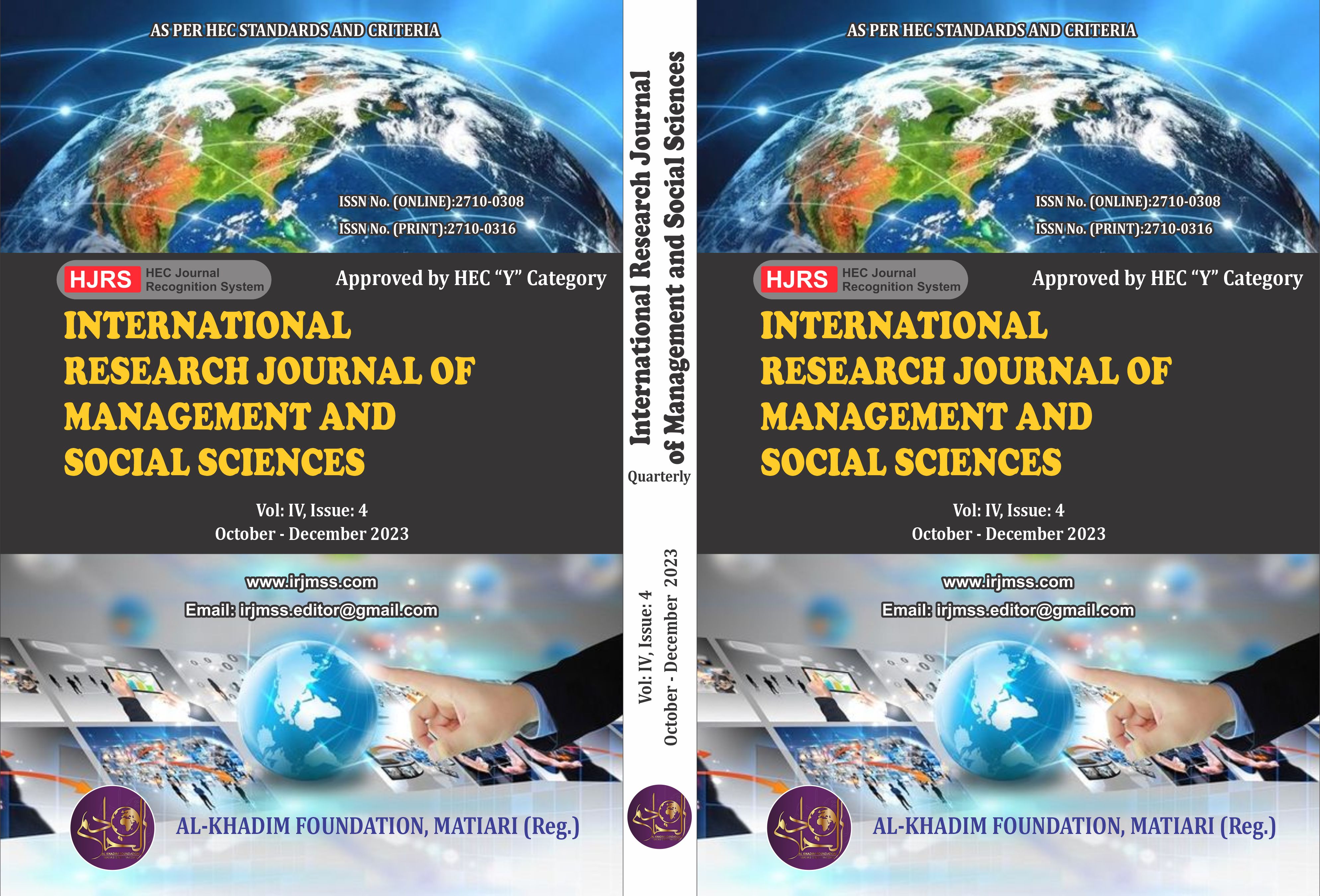Multilingualism in EFL Classrooms: A Case Study of Ghazi University
Keywords:
EFL Classrooms, L2 Learning, Multilingualism, Target LanguageAbstract
The study investigates the role of multilingualism in L2 classrooms. This study uses data from 245 respondents who were registered at the Department of English, Ghazi University DG. Khan. Students’ questionnaire was used to get information from the research respondents. The SPSS was used to examine the data. A great number of research participant in the study agreed that having an English-only policy in L2 classes creates a lot of problems because it is insufficient to improve the comprehension level of all students, particularly in Pakistan where a large number of learners have basic ability levels of understanding. They believed that speaking in multiple languages, in addition to their native tongue, would aid them in efficiently acquiring the L2. They can efficiently memorize grammar rules and regulations, and improve speaking, writing, listening, and reading abilities using multiple languages in the target language classrooms.
References
Alzhanova, A., & Chaklikova, A. (2022). Multilingual Education: Development of Professional Foreign Language Communicative Competence of Students in a Digital Environment. International Journal of Web-Based Learning and Teaching Technologies (IJWLTT), 17(1), 1-13.
Aronin, L., & Singleton, D. (2008). Multilingualism as a new linguistic dispensation. International journal of multilingualism, 5(1), 1-16.
Boo, Z., Dörnyei, Z., & Ryan, S. (2015). L2 motivation research 2005–2014: Understanding a publication surge and a changing landscape. System, 55, 145-157.
Brooks-Lewis, K. A. (2009). Adult learners’ perceptions of the incorporation of their L1 in foreign language teaching and learning. Applied linguistics, 30(2), 216-235.
Campbell, G. L., & King, G. (2018). The Routledge concise compendium of the world's languages. Routledge.
Cenoz, J. (2013). Defining multilingualism. Annual review of applied linguistics, 33, 3-18.
Dewaele, J. M., & Dewaele, L. (2020). Are foreign language learners’ enjoyment and anxiety specific to the teacher? An investigation into the dynamics of learners’ classroom emotions. Studies in Second Language Learning and Teaching, 10(1), 45-65.
Dewaele, J. M., & Botes, E. (2020). Does multilingualism shape personality? An exploratory investigation. International Journal of Bilingualism, 24(4), 811-823.
Dinçer, S. (2018). Content analysis in scientific research: Meta-analysis, meta-synthesis, and descriptive content analysis. Bartın University Journal of Faculty of Education, 7(1), 176-190.
Douglas, S. R., & Rosvold, M. (2018). Intercultural communicative competence and English for academic purposes: A synthesis review of the scholarly literature. Canadian Journal of Applied Linguistics, 21(1), 23-42.
Fox, B. A., Thompson, S. A., Ford, C. E., & Couper-Kuhlen, E. (2013). 36 Conversation Analysis and Linguistics. The handbook of conversation analysis, 726.
Harmon, C., Oosterbeek, H., & Walker, I. (2003). The returns to education: Microeconomics. Journal of economic surveys, 17(2), 115-156.
Jaspaert, K., & Lemmens, G. (1990). Linguistic evaluation of Dutch as a third language. Bicultural and trilingual education: The Foyer model in Brussels, 30-56.
King, K. A. (2016). Language policy, multilingual encounters, and transnational families. Journal of Multilingual and Multicultural Development, 37(7), 726-733.
King, S. (2018). Exploring social and linguistic diversity across African Americans from Rochester, New York. Stanford University.
Lasagabaster, D. (2017). Language learning motivation and language attitudes in multilingual Spain from an international perspective. The Modern Language Journal, 101(3), 583-596.
Lan, Y. J., Fang, S. Y., Legault, J., & Li, P. (2015). Second language acquisition of Mandarin Chinese vocabulary: Context of learning effects. Educational Technology Research and Development, 63, 671-690.
Ortega, A., Urla, J., Amorrortu, E., Goirigolzarri, J., & Uranga, B. (2015). Linguistic identity among new speakers of Basque. International Journal of the Sociology of Language, 2015(231), 85-105.
Sridhar, K. K. (1996). Societal multilingualism. Sociolinguistics and language teaching, 47, 70.
Sussex, R., & Kirkpatrick, A. (2012). A postscript and a prolegomenon. In English as an international language in Asia: Implications for language education (pp. 223-231). Dordrecht: Springer Netherlands.
Thompson, J. L. (2009). Building collective communication competence in interdisciplinary research teams. Journal of Applied Communication Research, 37(3), 278-297.
Thompson, A. S., & Aslan, E. (2015). Multilingualism, perceived positive language interaction (PPLI), and learner beliefs: what do Turkish students believe? International Journal of Multilingualism, 12(3), 259-275.
Thompson, A. S., & Khawaja, A. J. (2016). Foreign language anxiety in Turkey: The role of multilingualism. Journal of Multilingual and Multicultural Development, 37(2), 115-130.
Swain, M. (2000). The output hypothesis and beyond Mediating acquisition through collaborative dialogue. Sociocultural theory and second language learning, 97(1), 97-114.
Yao, Y., & Van Ours, J. C. (2015). Language skills and labor market performance of immigrants in the Netherlands. Labour Economics, 34, 76-85.
Yulduz, M. (2021). Lexico-grammatical parts of speech expressing the indefiniteness of the subject. JournalNX, 7(1), 323-327.






